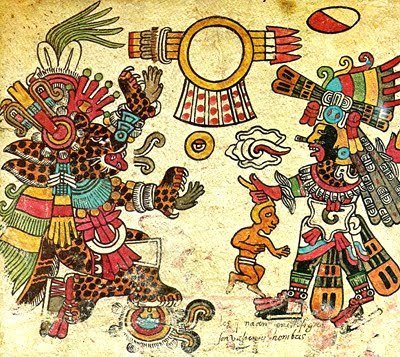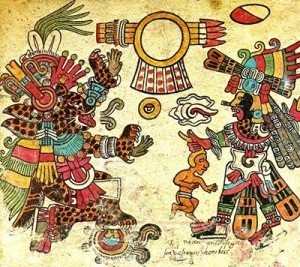#tlatoaniItzcoatl
Explore tagged Tumblr posts
Text
Codex Borbonicus or Codex Cihuacoat

Codex Borbonicus also known as Codex Cihuacoat was written just a few years before the Spanish conquest of the Aztec Empire. Only a few of these codices are known, since the fourth tlatoani Itzcoatl ordered them all burnt because it was "not wise that all the people should know the paintings". Like all pre-Columbian codices, Codex Borbonicus is entirely pictorial, although some Spanish descriptions were later added.

Codex Borbonicus Codex Borbonicus can be divided into three sections. The first section is one of the most intricate surviving divinatory calendars (or tonalamatl). Each page represents one of the 20 trecena (or 13-day periods), in the tonalpohualli (or 260-day year). The second section of the codex documents the Mesoamerican 52 year cycle, showing in order the dates of the first days of each of these 52 solar years. The third section is about rituals and ceremonies, particularly those that end the 52-year cycle, when the "new fire" must be lit. Download the Codex Borbonicus here:

Codex Borbonicus or Codex Cihuacoat
What does the Codex Borbonicus teach?
The Codex Borbonicus is an ancient Mesoamerican codex, which is believed to have been created in the 16th century in Mexico, likely in the vicinity of the Aztec capital, Tenochtitlan. It is one of the few surviving pre-Columbian manuscripts from the Americas. The codex primarily serves as a pictorial and symbolic representation of various aspects of Aztec culture, religion, and calendrical systems. Some of the key teachings and information that can be derived from the Codex Borbonicus include: - Calendar and Timekeeping: The codex contains intricate calendars used by the Aztecs, including the tonalpohualli (a 260-day ritual calendar) and the xiuhpohualli (a 365-day solar calendar). It provides information on the ritual and agricultural events associated with each day of these calendars. - Rituals and Ceremonies: The codex illustrates various religious ceremonies and rituals, such as sacrifices, festivals, and divination practices. It includes images of gods and goddesses and the offerings and actions associated with these rituals. - Deities: The Codex Borbonicus features depictions of Aztec gods and goddesses, along with their attributes and symbolic representations. It offers insights into the religious beliefs and pantheon of the Aztecs. - Agriculture and Farming: There are sections in the codex that depict agricultural practices, including planting, harvesting, and the agricultural calendar. This information was essential for the Aztecs' agricultural activities, which were closely tied to their religious and cultural practices. - Cosmology: The codex contains imagery related to the Aztec cosmology and their understanding of the universe. This includes depictions of celestial bodies, such as the sun and moon, as well as celestial events. - Historical Events: While the Codex Borbonicus is primarily focused on religious and calendrical information, it also includes some historical events and rulers' names. However, it is not as detailed in this regard as some other codices. It's important to note that the Codex Borbonicus, like other pre-Columbian codices, relies heavily on pictorial symbols and images, often with accompanying glyphs and hieroglyphics. Interpretation of its contents has been a subject of ongoing research and study among scholars to fully understand and appreciate its cultural and historical significance.
THE CODEX BORBONICUS - Browsing Facsimile Editions
Read the full article
#AztecEmpire#ceremonies#codex#CodexBorbonicus#CodexCihuacoat#Mesoamerican#rituals#Spanishconquest#tlatoaniItzcoatl#tonalamatl#tonalpohualli#trecena#xiuhpohualli
0 notes